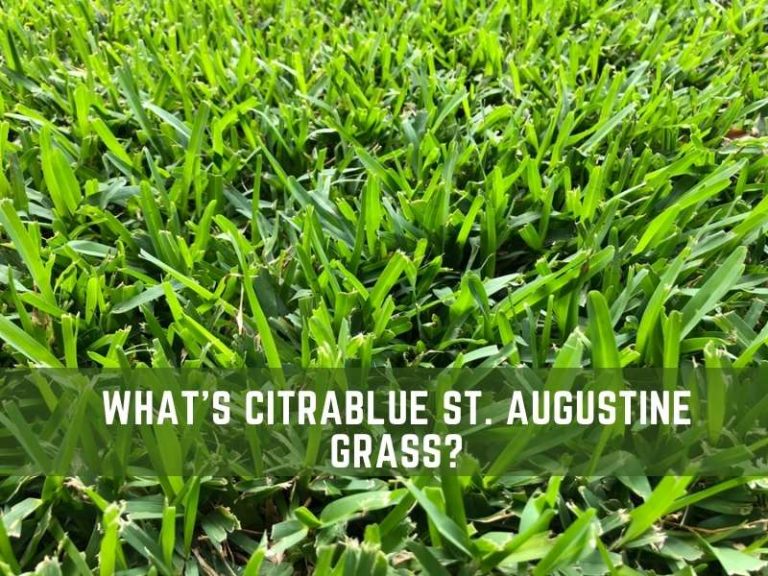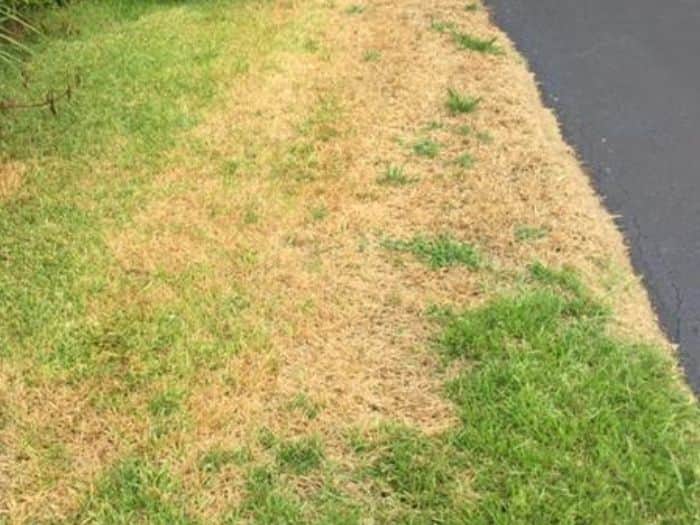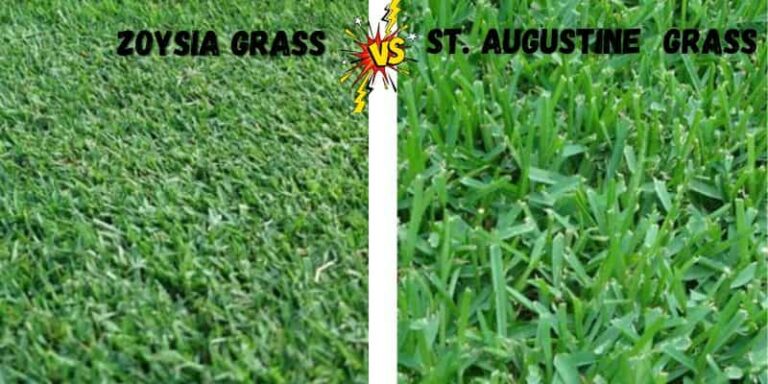Does St. Augustine Grass Go Dormant? Signs + Winter Care Guide
The St. Augustine grass (Stenotaphrum secundatum [Walt]) is a warm-temperature-loving turf that is native to southern Mexico, the Caribbean, South America, western Africa, and the US.
As long as it grows on soil with temperatures above 60℉, it’ll remain dark green and have a coarse texture. However, when its soil temperatures drop 50℉, it will turn brown.
Here is a caring guide to keep your grass green even during dormancy.
When does St. Augustine Grass go dormant?
During the fall season, when temperatures fall at night, St. Augustine grass will experience a slow growth rate. As winter sets in, the soil temperatures drop to 55℉ and lower, compelling the grass to go dormant. It’s the grass’ way of conserving water and nutrients. The dormancy stage may last weeks or months, depending on the local climate.
The best time to apply fertilizer to a St. Augustine turf is in March, preferably two weeks after it’s restored its greenness. In addition, proper watering and care can assist the grass in return to its dark-green life once the dormancy ends.
For some regions, the St. Augustine grass might not enter dormancy, depending on the soil type and turf quality. If you mow or fertilize it during this period, it might not benefit from the nutrients you apply to it. Mowing a slow-growing turfgrass at this time is also prohibited since it might not recover from the cut after dormancy. By the time spring comes, your grass is ready for fertilization application. Use the 16-4-8 application fertilizer for the best results.
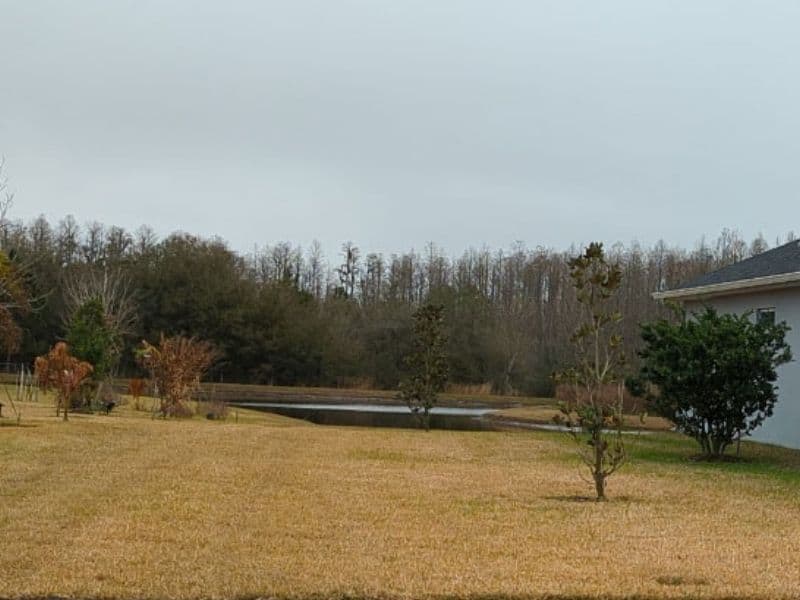
Signs St. Augustine grass has gone dormant
During fall, St. Augustine grass’ growth rate slows down; a sign that it’s transitioning to dormancy. Here is how a dormant grass looks like:
- The entire lawn is the same brown color
Upon close observation; does the entire lawn have the same brown color? Are there patches of brown blades while other parts look green? If there’s browning on the entire lawn, then that’s a sign of dormancy because it’s ceased growing almost completely. Watering it deeply once a week will help it spring back to green.
If there are many browning patches that need replacement, your best bet should be sodding after the dormancy period. It starts with raking up and removing the browned grass. Next, lay out thin layer of new and high-quality topsoil. Finally, level the area to ensure the sod lays down flat so that such issues don’t emerge in the future.
- It turns green again when warm temperatures set in
The main difference between a dormant and a dead St. Augustine grass is its ability to spring back to greenness when soil temperatures rise. Dead grass might not come to life even if you water or add fertilizer. To determine if it’s dead or dormant, give it a few weeks after proper watering.
- The roots hold fast when pulled
The St. Augustine grass root system is above the ground, exposing it to winter damage. If you suspect that your turfgrass is dead or dormant, try pulling it out. If it holds on to the soil, then it’s probably dormant. But if it pulls out easily, then it’s dead. The only remedy to the latter would be starting over with new seeds because it’s impossible to bring dead grass back to life. For the former, applying heavy watering will bring out of dormancy.
How to prepare a St. Augustine grass lawn for winter
Ensuring your St. Augustine grass survives dormancy in winter starts with applying proper care tips in fall, when the temperatures begin falling. Here are the care steps to keep your St. Augustine turf before dormancy:
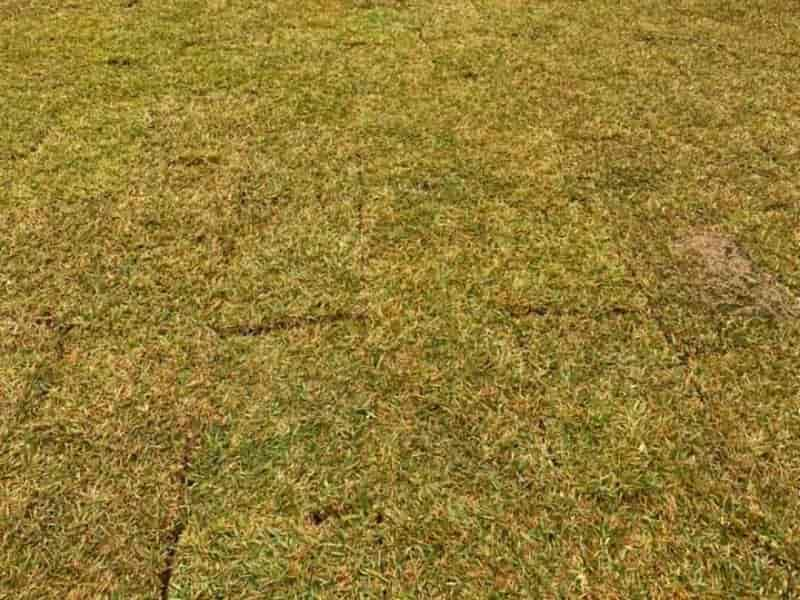
Step 1: Test the soil pH
It’s necessary to perform a soil test to gauge the pH for which St. Augustine thrives. The ideal pH should be between 6 and 6.5. If the test signifies that the soil has a pH below that range, it would be best to reduce its acidity by applying lime. pH higher than that range should be raised through sulfur application.
Step 2: Apply a potassium-based fertilizer
Fertilization during winter has little-to-no impact on your St. Augustine grass growth rate. If need be, apply ½-1 pound nitrogen per 1,000 square feet. While the St. Augustine grass needs nitrogen for growth and development, it would be pointless to use it before dormancy, particularly in fall. The only nutrient it needs at this point is potassium or potash which helps it withstand the stress and damage that comes with extreme winter damage. With proper fertilization, you can revive st Augustine grass and get to grow back.
Fertilization application tips for St. Augustine
- Apply 1 pound of nitrogen per 1,000 square feet in September or October
- Use the 16-4-8 fertilizer which contains:
- 16% of nitrogen to promote blade growth
- 4% phosphorus to encourage the grass to store energy in roots before dormancy
- 8% potassium to protect the grass from diseases and winter damage
Proper fertilization can make St. Augustine grass spread fast and grow during the fall can speed up your lawn’s ability to sprout in the upcoming spring season. It also protects your lawn from the worst browning effects due to the impact of cold weather on grasses.
Step 3: Mow your lawn
The ideal mow height for St. Augustine grass before dormancy is between 2.5 and 3.5 inches. If your turf is longer than this height range, mow it to promote its spring green-up. Avoid mowing an already dormant grass as this might add stress and prevent it from recovering, even if it has long blades during winter. To get the best mowing results, remove lawn debris like falling tree branches, leaves, or rocks.
Step 4: Water it on as-needed basis
The St. Augustine grass needs a 20-day watering to keep the topsoil moist to a 3-inch depth. After the 20 days, when temperatures have dropped to 85℉ and below and the grass’ growth rate starts crawling, readjust the watering schedule to once a week. This should prevent winter dehydration.
Once your St. Augustine grass starts reviving from dormancy, resume the watering schedule to 3-5 times a week. This will help restore any brown patches of browned grass. However, if your lawn has been dead for more than five weeks, wait until spring to introduce new seeds to cover the bare spots.
When you follow these pre-dormancy care tips, your lawn will remain green. Come spring, conduct lawn renovation, including, checking if the irrigation system is operating effectively.
Watering dormant St. Augustine
The St. Augustine grass still needs water even if the visible part doesn’t show signs of growing. The roots beneath the surface are still thriving and producing energy before spring. Failing to water it during winter might speed up its death. During dormancy, precipitation from the winter may compromise the lawn’s watering needs. Work on removing the precipitation first before resuming your watering pattern as shown below:
- Water it once after two weeks
The entry of winter marks the season when St. Augustine grass experiences low water evaporation. That also means watering thrice a week makes the soil to be water-logged. It would be best if you reduced the watering once after every two weeks.
- Ensure the top 1-inch of soil has water
Use an irrigation system like the sprinklers to deliver water to the top 1 inch for one hour.
- Water it when the weather is warm, dry, and windy
As the weather gets warm, dry, and windy, the soil moisture loss rate increases. Water it when the soil surface is dry for 30-60 minutes. In case you overseed, water the new sods.
Pro tip: The type of soil and application speed of the irrigation system affects the rate at which your lawn utilizes the water. Avoid applying water faster than the soil can draw it.
Applying herbicides
Herbicides for the St. Augustine grass are designed to control weeds that are actively growing and competing with it for water and nutrients. The weeds may compromise the turf’s growing conditions particularly when the temperatures are below 85℉. The best remedy to controlling weeds is mowing to the 2.5-3.5 height, applying potassium fertilizer, and proper watering.
Weed control for this grass cultivar should apply as a preemergence measure. If the weeds are actively growing, postemergence herbicides will work for your lawn’s advantage. Examples of herbicides you can use include benefin, pendimethalin, bensulide, atrazine, and many others. These herbicides can only work if the turf isn’t under stress or if the air temperatures are 85℉ and below. If you’re stuck on which weed control product to buy, check with your local County Cooperative Extension Office representative.
Herbicide application tips
- Apply preemergent herbicide in September to control annual winter weeds
- The second herbicide winter application should follow 8-10 weeks later to achieve satisfactory control
- Water granular herbicides into the soil after the application
- Post-emergent herbicides should be applied to control henbit, chickweed, pennywort, dandelion, wild garlic, and other winter-loving weeds
- The herbicide spraying technique should be sufficient, not overdone
- Some herbicides may come in handy when controlling bluegrass (Poa annua)
- Adhere to the label’s directions for satisfactory control
Mowing
During winter, St. Augustine grass doesn’t grow. Mowing it at this time is more like cutting an open wound. It is highly unlikely that it will heal from these cuts, inviting winter damage and fungal infections.
Can you stop St. Augustine grass from going dormant?
Nothing can stop the St. Augustine grass from going dormant. That’s its natural way of coping with the freezing temperatures. However, you can keep your lawn green all year round by overseeding with freeze-loving grass like fescue, three weeks before the first expected frost.
The St. Augustine turfgrass is a tolerant plant that can escape winter damage as long as you follow the right care tips before it transitions to dormancy. The signs of dormancy illustrated above will help you design the right care plan, leaving your lawn looking healthy and green.
Reference

